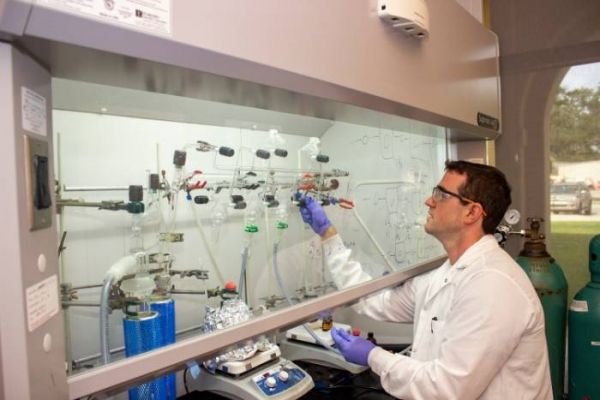A century ago, natural gas was not the hot commodity it is today. A byproduct of oil production, or fracking, natural gas is now abundant and low-cost, resulting in its high demand for energy production.
The gas not only powers homes and cars, but the hydrocarbons that make up the gas, such as methane, can be converted and used for creating other products like fuel and plastic. The trick is separating, or breaking, the bond between carbon and hydrogen to make methane consumable. For the past year, LSU Chemical Engineering Assistant Professor Chris Arges has undertaken that very task.
“The emergence of low-cost natural gas has motivated many scientists and engineers to devise new processes to convert natural gas into high-value chemicals, rather than just burning it to power homes and vehicles, its lowest value,” Arges said. “The reason we’re working on this is so we come up with a new way to convert natural gas, which is mainly composed of methane, into other products such as liquid fuels like gas or jet fuel, or more importantly, other chemicals that can be used to make plastics and other consumable products that are found everywhere. It’s a very difficult proposition. The C-H bond in methane is hard to break.”
Currently, plants and companies upgrade methane through a process called steam reforming, followed by the Fischer-Tropsch process, which is energy-intensive and cost-prohibitive.
Continue reading at Louisiana State University (LSU).
Image via Louisiana State University (LSU).


